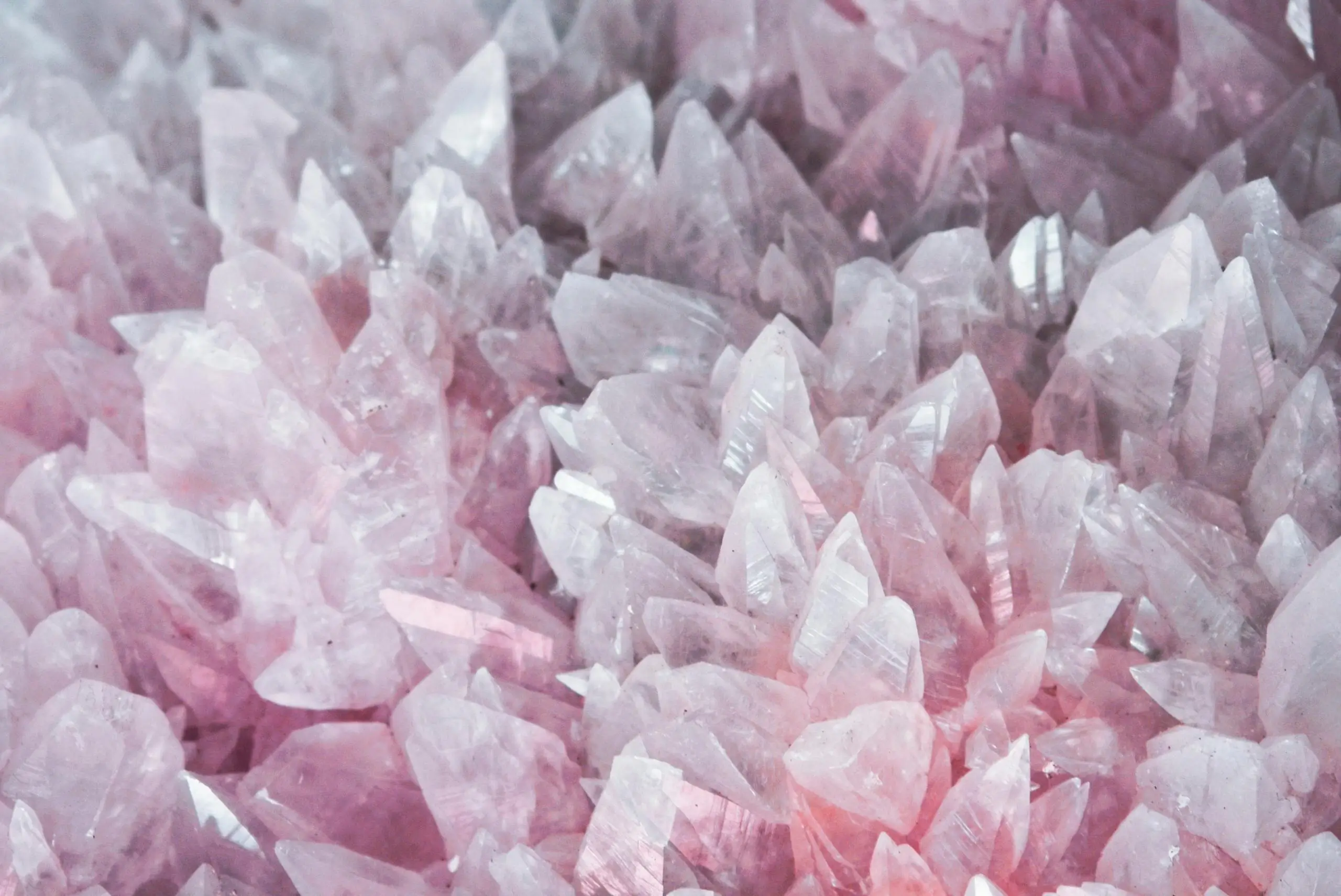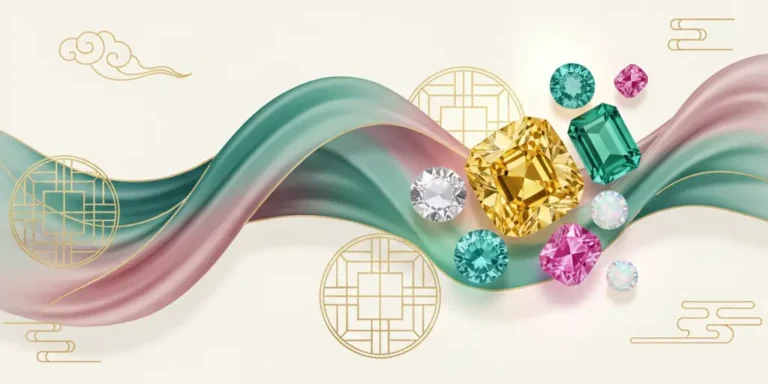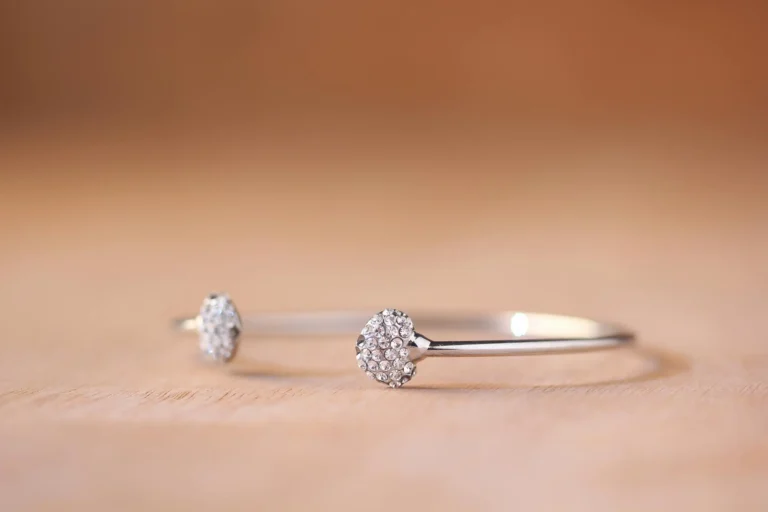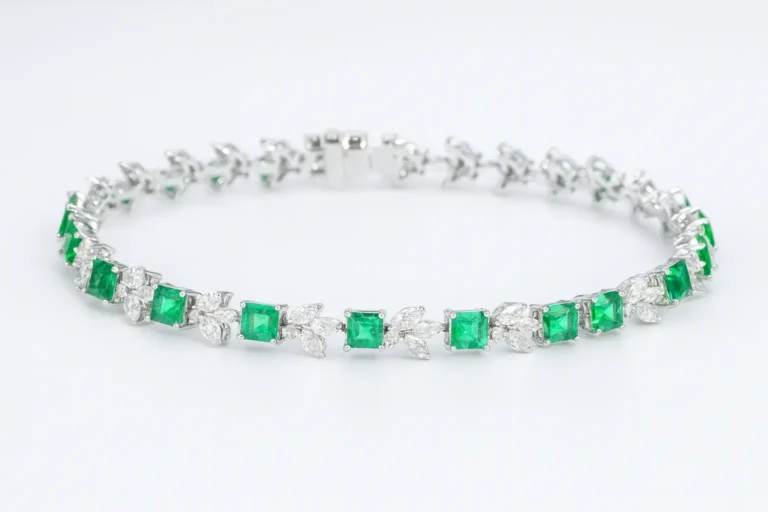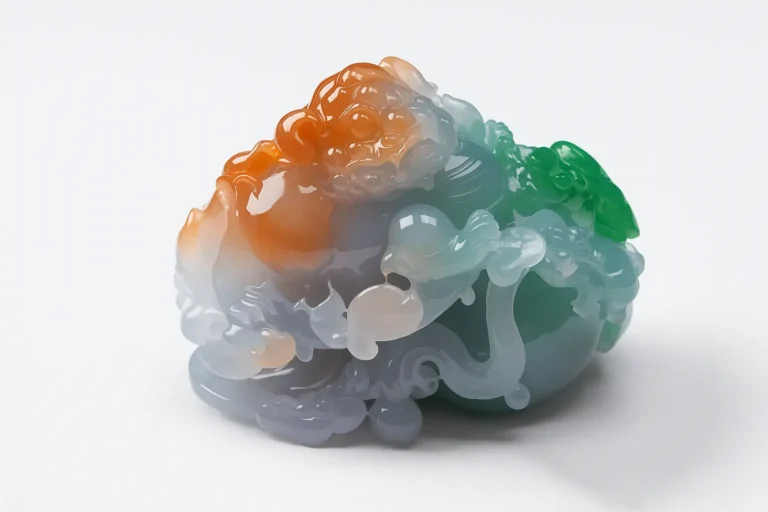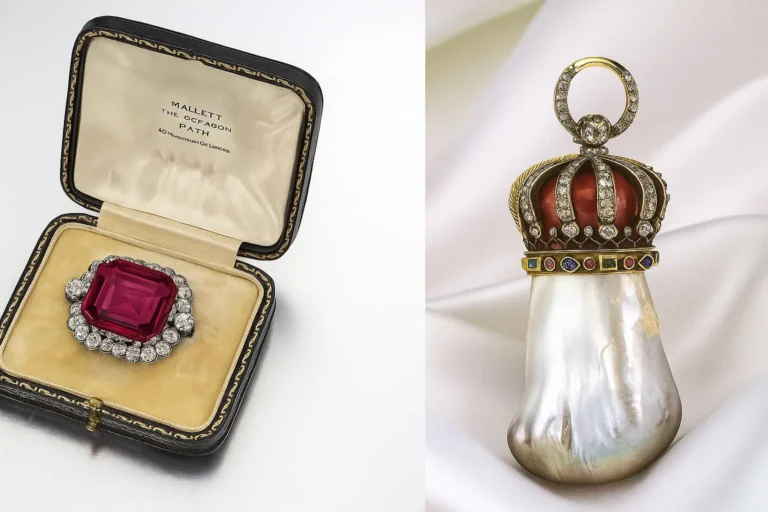What Is Windowing in Gemstones and How Can You Avoid It?
Why Everyone Cares About Windowing in Gemstones
Windowing in gemstones is a common concern for gem lovers. While it may sound simple, few resources clearly define it or explain why it happens. In this article, I’ll break down what windowing in gemstones is, why it occurs, and how you can avoid it.
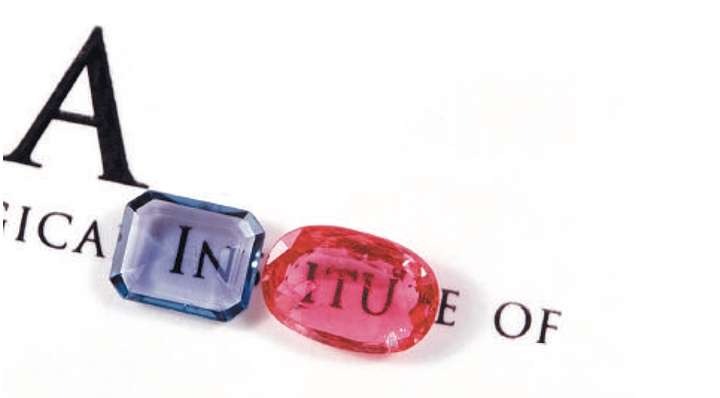
A gemstone with a window usually has a pavilion (the bottom part) that is cut too shallow. As a result, the stone looks thinner than normal. If you place the gem face-down on printed text, you can clearly read the letters underneath. That’s the most intuitive way to identify a window.
Example: Sri Lankan Natural Unheated Rough, 11 Carats
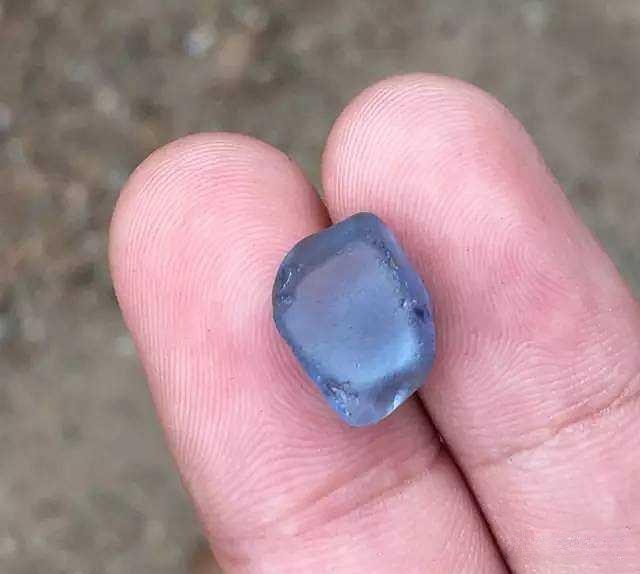
As a gem cutter, my first responsibility is to maximize both beauty and value. When we cut a rough stone, the main challenge lies in balancing weight with brilliance. For example, I once worked on an 11-carat rough from Sri Lanka. After preforming (shaping the rough), the stone was about 7 carats. If I had cut it purely for economic benefit, I could have finished with a stone around 8 carats, following the traditional Sri Lankan cutting style, which emphasizes preserving weight—because gems are sold by the carat, and heavier stones naturally command higher prices.
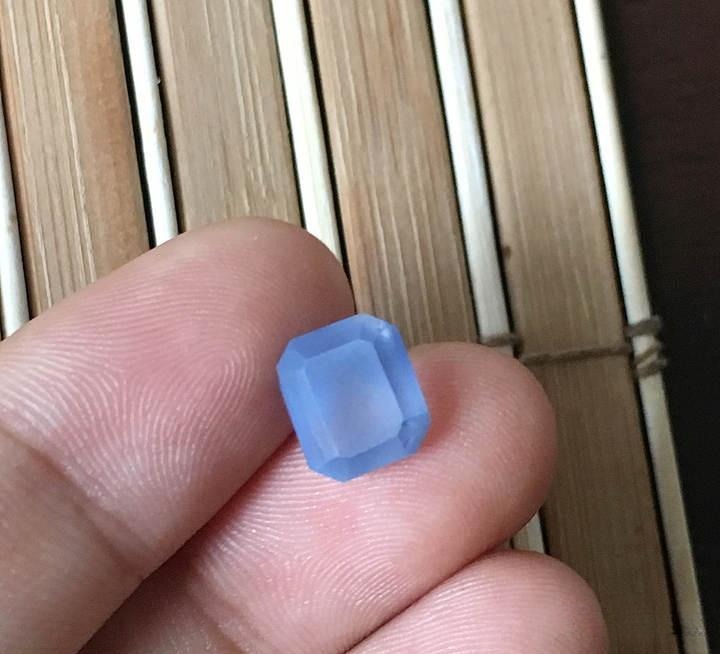
However, I took a different approach. My goal was to reveal the stone’s beauty rather than keep as much weight as possible. The final gem ended up at 5.58 carats. While the color was slightly lighter, the brilliance was explosive in person! This illustrates the dilemma: weight, color, and brilliance are always in tension, and every cutter makes different choices.
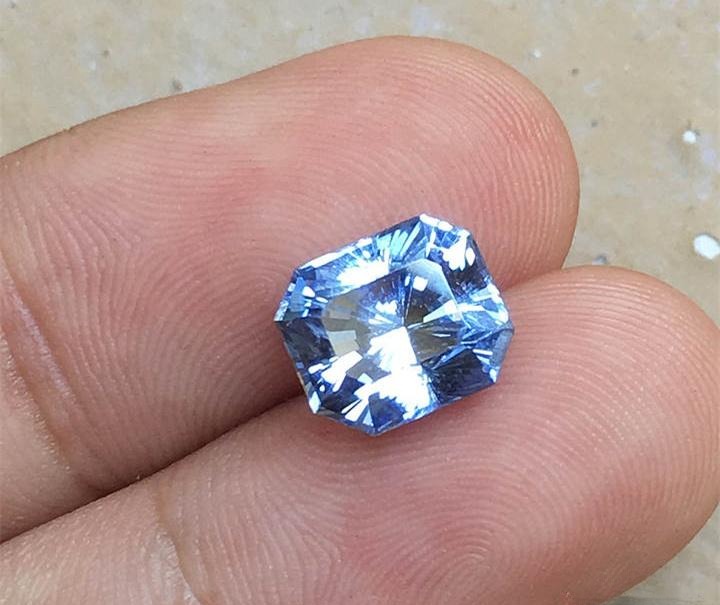
To learn more about Sri Lankan gemstones and how to distinguish them from others, check out our Peonyjewels blog article: Madagascar vs Sri Lanka Pink Sapphires: How Experts Identify Real Gems by Origin and Inclusions.
What Is a Gemstone Window?
In gemology, a “window” refers to an area of a transparent gemstone where, due to cutting proportions, the color saturation appears much lighter than the rest of the stone’s body color.This phenomenon is also called the Gemstone Window Effect.
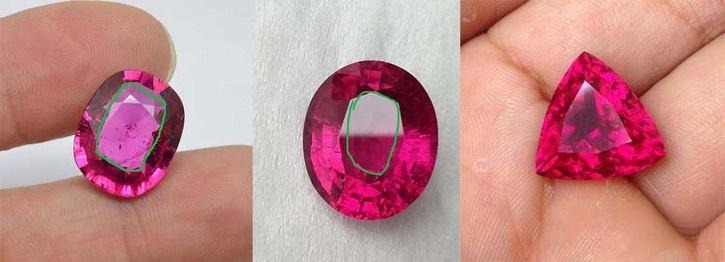
Here’s what happens: when light enters the crown (the top part of the gem) and travels to the pavilion (the bottom), most of the light fails to reflect back to the viewer’s eye. Instead, it passes straight through the pavilion and escapes. Alternatively, light may enter through the pavilion and exit directly through the crown, without bouncing inside. The result is a “see-through” spot—like looking through a window.
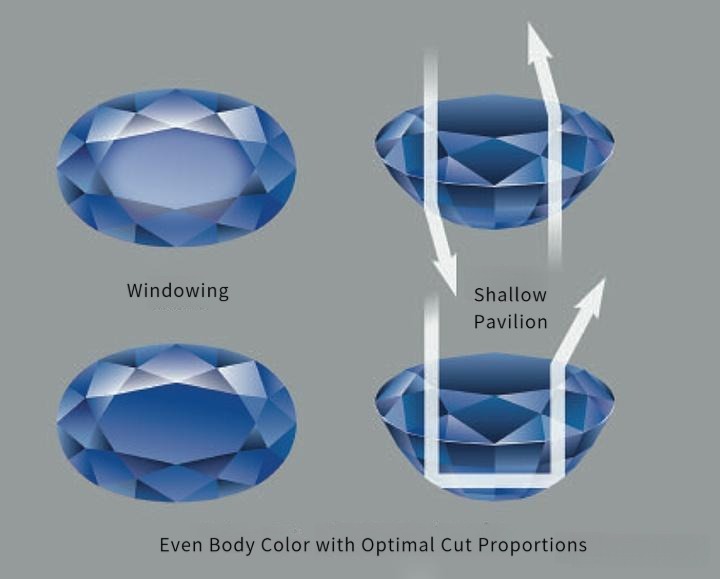
That window area looks pale compared to the gem’s overall body color because much of the light leaks out. Since the pavilion is too shallow, the gem cannot return light effectively. The consequence is a drop in saturation, leaving part of the gem looking washed out.
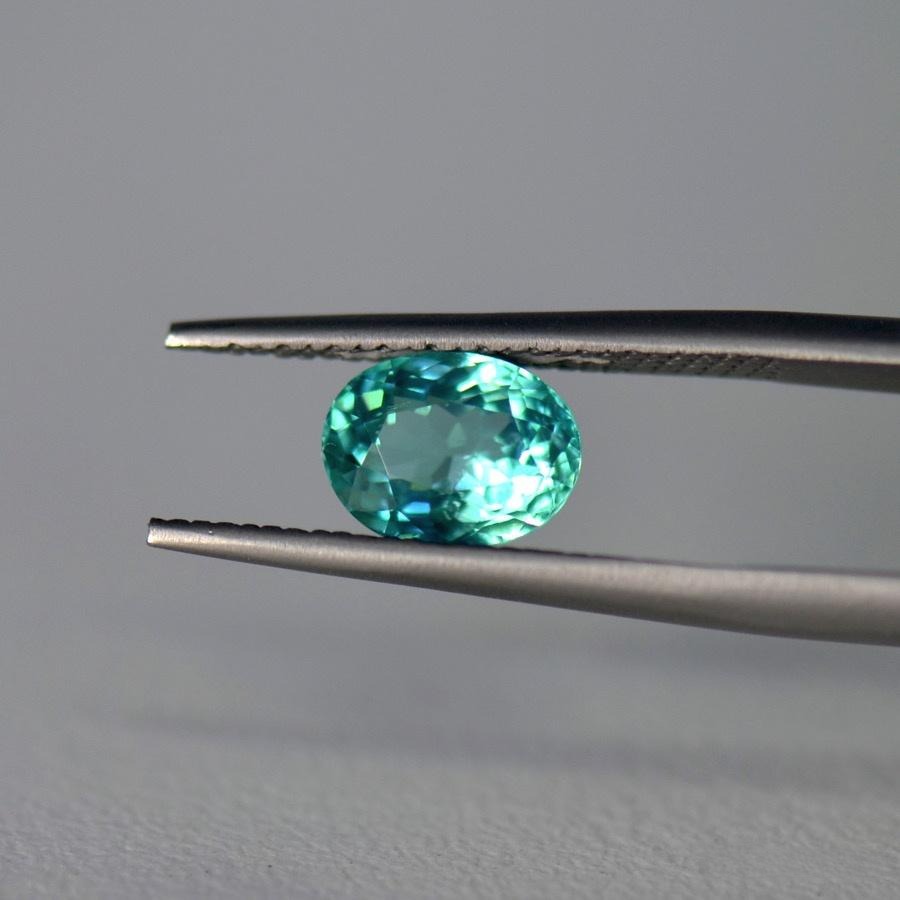
On the other hand, a well-cut gem has proper proportions and pavilion angles. In that case, the majority of light bounces around internally and returns to the viewer’s eye. This eliminates the window effect, giving the gem even color distribution and strong brilliance.
Why Do Gemstones Have Windows?
There are two primary reasons:
1. Limitations of the Rough Material
Unlike synthetic materials, natural gemstones rarely come in perfect shapes. Their proportions of length, width, and depth are often less than ideal. Sometimes the rough is wide and flat with very little thickness, or sometimes it is deep and narrow. Because cutters work with the stone they have, compromises must be made.
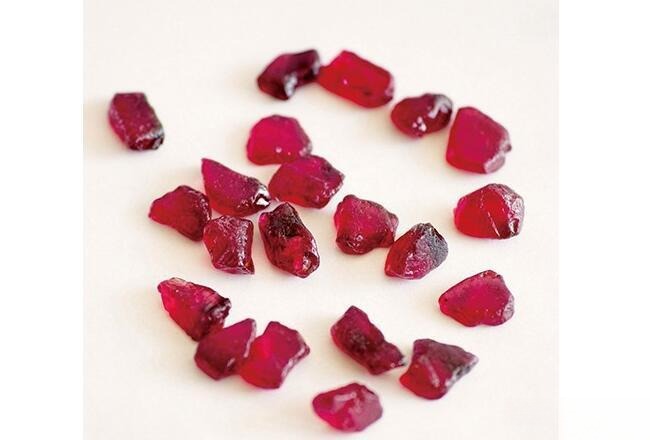
For example, if the rough has a very large face but very little depth, the cutter may have no choice but to cut a shallow pavilion, which inevitably creates a window. Splitting the rough into smaller pieces for better proportions would result in a huge loss of weight and therefore value—something that doesn’t make sense economically.
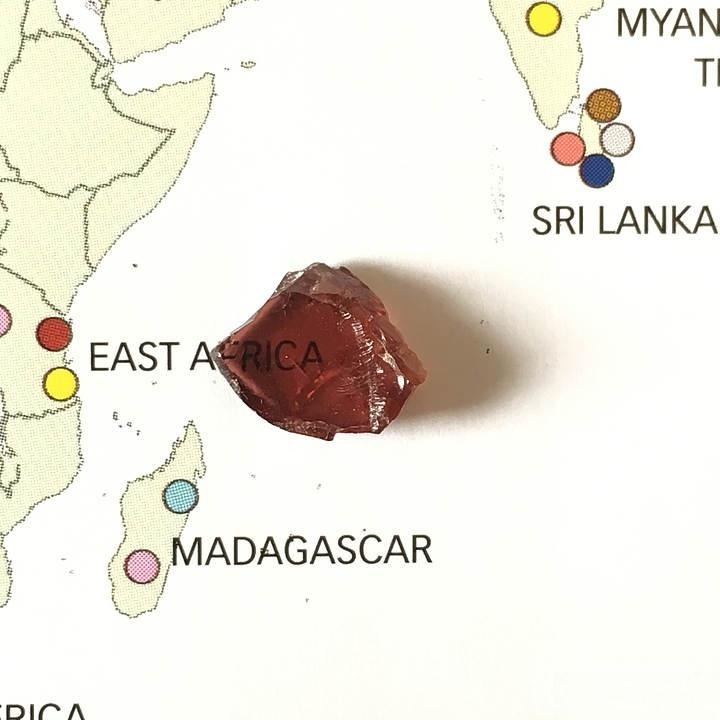
If the above ruby rough were cut, the resulting stones would often look like the ones shown in the image below: large tables, shallow pavilions, and big windows in the center. The color saturation difference is obvious, and you can almost see right through them.
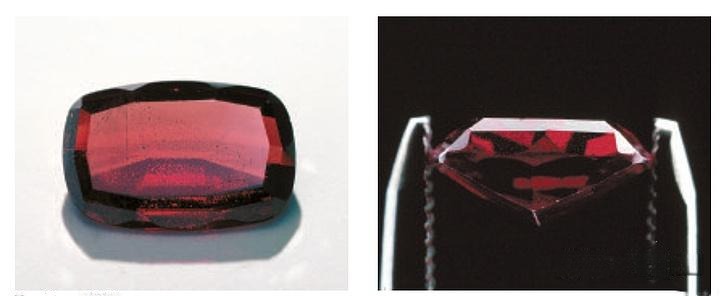
These are gemstones I collected when I first started out. Although the photos were taken with a phone and are not very clear, they clearly show very typical examples of gemstone windowing, as seen in the images below.
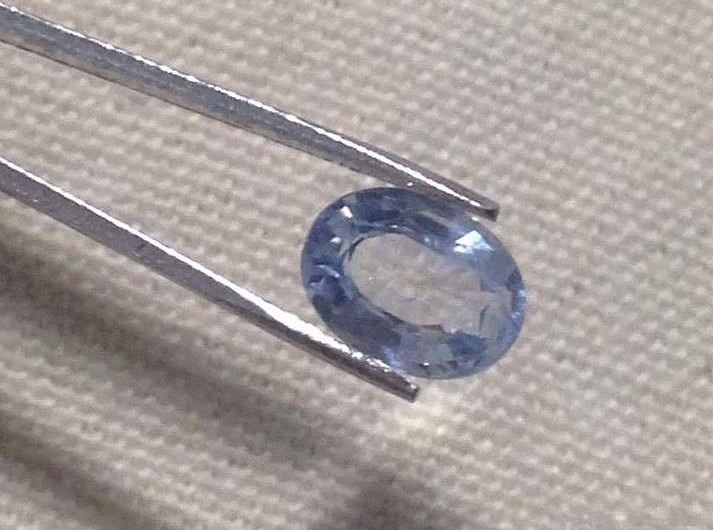
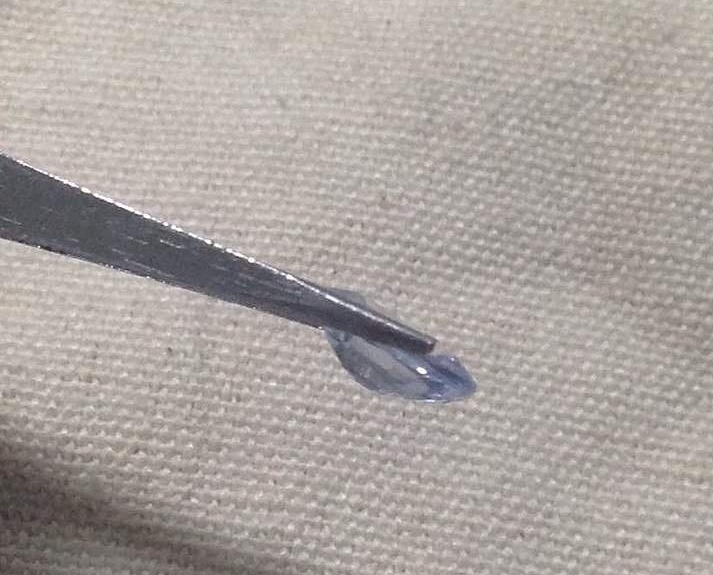
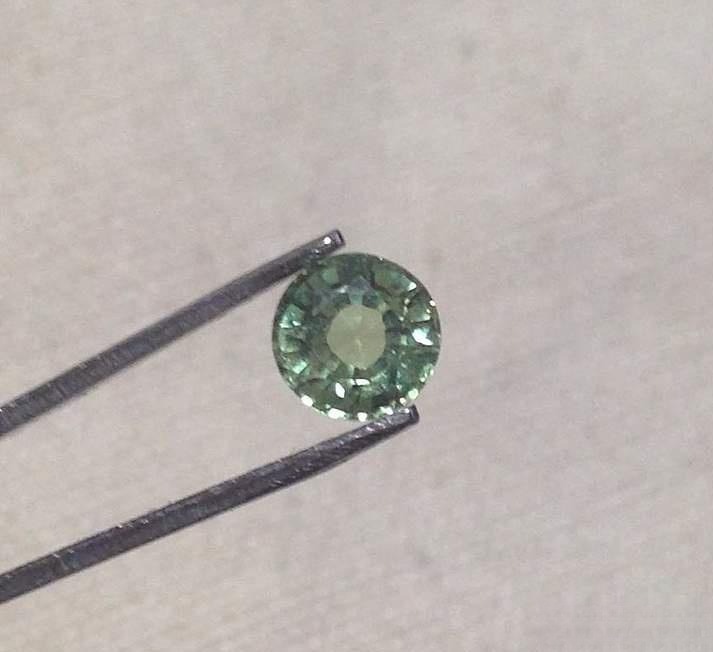
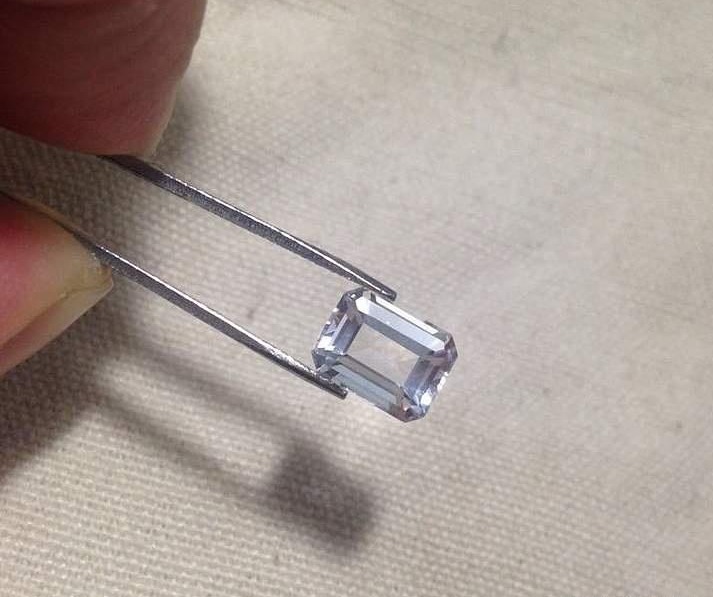
2. Deliberate Cutting to “Open a Window” and Its Role in Windowing in Gemstones
Interestingly, cutters sometimes create windows on purpose. This usually happens when working with darker or grayer-toned material.
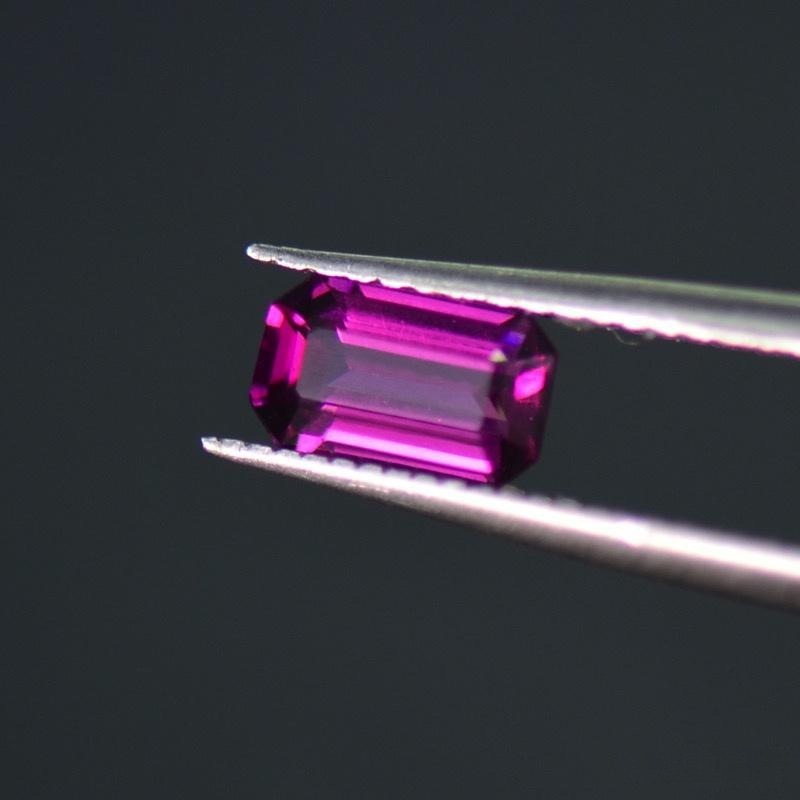
For example, in garnet, spinel from Sri Lanka, or dark grayish tourmaline, the natural body color is already very deep—almost black. If such a gem were cut with ideal proportions and a deeper pavilion, the light would undergo too many internal reflections. This makes the gem appear even darker, essentially “black on black.” To avoid this, cutters may deliberately cut the pavilion shallow, creating a window. By letting more light leak out, the gem looks brighter and less heavy in tone.
Take a spinel as an example: if cut proportionally, it would look overly dark and lose visual appeal. But with a shallow pavilion and an intentional window, the stone shows a pale whitish area in the center where saturation is lower than the body color. This compromise prevents the entire gem from looking pitch-black, making it appear livelier and more appealing to the eye.
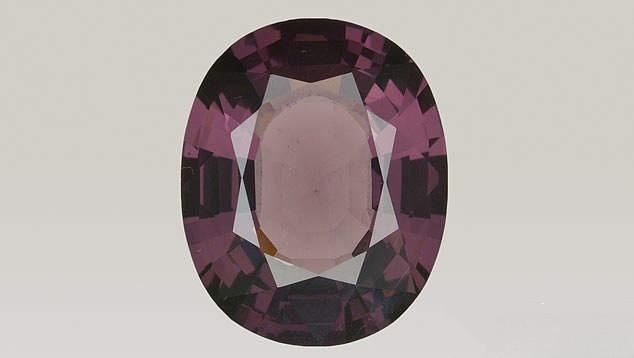
However, weight also plays a significant role. In the gemstone trade, every carat matters. When cutting rare and expensive rough, losing too much weight drastically increases the cost per carat and reduces profit. Therefore, cutters must strike a delicate balance: they cannot always sacrifice weight for the sake of perfect proportions, nor can they pursue brightness alone at the expense of beauty.
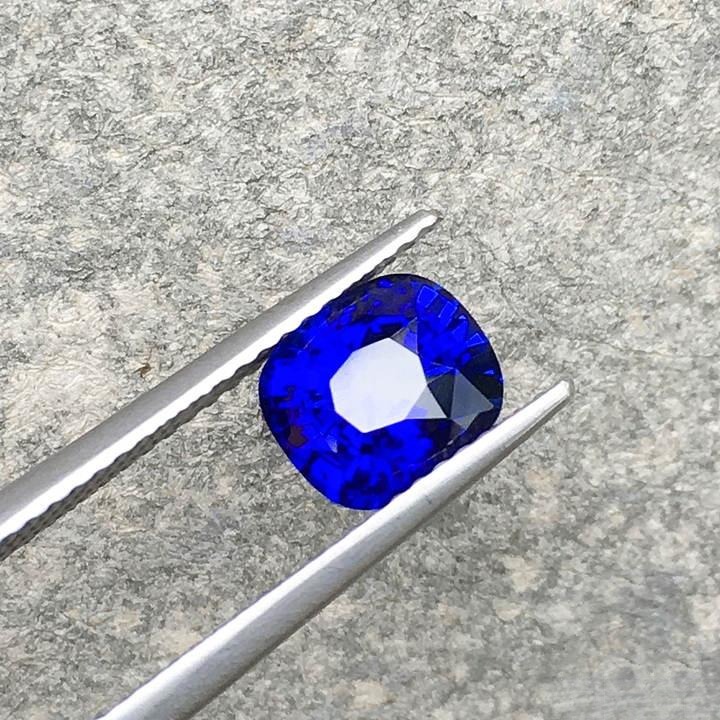
To illustrate this balance, consider a 2.1-carat gemstone with perfect cutting and a top-grade peacock blue color. Its proportions may not be flawless in terms of weight retention, but the brilliance, vivid color, and overall beauty far outweigh the slight sacrifice in carat size. This shows that sometimes even if a gem is not cut to textbook perfection, its color and fire can still be displayed in the most stunning way.
How to Avoid Windowing in Gemstones When Buying
Even though windowing can occur naturally or be intentionally created during cutting, there are practical steps you can take to minimize its impact when selecting a gemstone. Paying attention to these details helps ensure you choose stones with optimal gemstone brilliance and avoid unwanted gemstone window effects.
1.Check Stones Under Different Light Conditions
Always examine gemstones under multiple lighting situations—natural daylight, indoor lighting, and even LED lights. Windows often become more obvious under direct light. By observing how the gem returns light and how evenly the color saturates, you can quickly spot areas prone to windowing in gemstones.
2.Examine Pavilion Depth and Cut Proportions
A well-proportioned pavilion helps retain color saturation and maximize brilliance. If the pavilion is too shallow, the gem is more likely to develop a window. Ask the jeweler or inspect diagrams of the gem’s cut to confirm that proportions are balanced, minimizing potential gemstone cut flaws.
3.Ask the Jeweler About Stone Adjustments
Some darker stones may have been deliberately “opened” to improve brightness. Don’t hesitate to ask the jeweler whether the stone has such adjustments. Understanding how and why a gem was cut can help you anticipate the appearance of windows and choose a stone that balances weight, color, and fire.
By following these steps, you can confidently select gemstones that display consistent color and sparkle, reducing the likelihood of unwanted gemstone window effects, and ensuring your collection truly shines.
Peonyjewels’ Insight on Windowing in Gemstones
At Peonyjewels, we define a window as:
A transparent gemstone area where, due to cutting choices, color saturation is much lower than the gem’s body color.
The two main reasons are:
- Material limitations – when the rough is wide and flat, a shallow pavilion is unavoidable.
- Dark material adjustment – cutters deliberately create a window to lighten gems that would otherwise look too dark.
When selecting gemstones, paying attention to cut, pavilion depth, and light performance is key to avoiding unwanted window effects. Balancing color, weight, and cutting precision is never easy. After all, these are natural stones, not lab-created products. Ultimately, the best advice is simple: if the price feels fair and the gem speaks to you, trust your eye and add it to your collection.
Conclusion: Finding Beauty Beyond Windows
Gemstone windows remind us that perfection is rare—every stone is a balance of nature and human choice. What matters most is the beauty that shines through, even with its imperfections. Understanding how to avoid gemstone windowing helps collectors choose stones with maximum brilliance.
At Peonyjewels, we follow the same spirit in our handmade vintage earrings: each piece is crafted with individuality, timeless charm, and respect for natural beauty.

